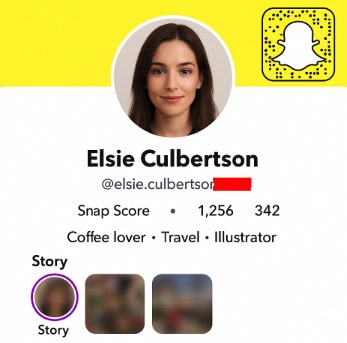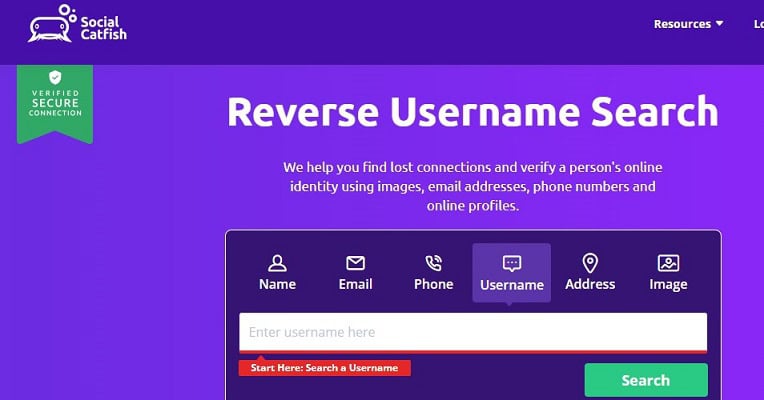People try to find a fake Snapchat account that looks like them, their friend, or their brand; it’s stressful, but you don’t have to guess what to do next. First, get some evidence like screenshots, full profile views, any snaps or story content, and timestamps, because these posts can vanish.
One more thing to do is just reverse image search the profile and posted pictures, search the exact username in quotes across Google and social networks, and look for matching bios or mutual friends.
Many impersonators reuse photos and usernames across platforms, so cross-platform mapping often exposes a lead. You can also try a paid reverse lookup (Social Catfish and similar services) that aggregates results from public records and social sites.
You can take action on a fake Snapchat via their impersonation reporting flow if you have proof, and consider professional takedown or legal services when the impersonation causes serious harm, repeated harassment, or fraud.
This article gives the practical sequence and tools to find who made this ID or get the fake account removed.
Contents
Why Do People Create Fake Snapchat Accounts?
In several cases, the intent is malicious, and in other cases, it’s opportunistic or careless. One thing to remember is that anonymity lowers social clash, here are some of the reasons listed.
1. Harassment and Bullying:
Many fake accounts are created to harass, threaten, or humiliate a target. It often involves posting embarrassing photos, making false claims, sending abusive messages, or coordinating group harassment. In some cases, perpetrators use fake profiles to avoid being traced, to gaslight victims, or to rally others into bullying. Platforms like Snapchat provide reporting tools, but sustained harassment sometimes requires evidence collection and escalation to the platform.
2. Impersonation:
Some impostors copy a real person i.e. a friend, coworker, celebrity, or brand, to deceive others, ruin reputations, or manipulate relationships. One thing impersonators do is mimic profile pictures, usernames, or story content to seem authentic. This can be used to extract private details, embarrass the real person, or damage trust. Snapchat explicitly bans impersonation and has dedicated reporting options for “pretending to be me or someone I know.”
3. Scams, Promotions, or Fraud:
Many fake profiles are created for scams (phishing, romance scams), spam promotions, or to direct people to fraudulent websites. It is to watch for accounts offering deals, asking for money, or sending links; these are often created en masse and reused across platforms. Detecting patterns of identical usernames across sites, recycled images, and rapid message bursts is key to distinguishing impersonation from such frauds.
How To Find Out Who Made A Fake Snapchat Account?
There are many options you have to do, like inspecting profile details, scanning posted content, searching for mentions across platforms, and run reverse username/image lookups. Also, you can use paid services like Social Catfish or a legal/takedown service to force removal where appropriate.
1. Check Profile information
You can first collect everything visible on the fake account, like full username, display name, profile photo (save it), bio text, public Story content, and any listed friends or subscribers. These fake users reuse photos or usernames across platforms; copy exact spelling (including odd characters), and take multiple screenshots with timestamps.

One thing to check is mutual friends or followers; the fake account follows people you know, messages them, and asks if they recognize the account or shared messages. It helps to find any location tags, links, or repeated phrases in the bio.

After gathering, run a reverse image search on the profile photo and search the exact username on Google and other social networks. The identical matches often point to the original account owner or other fake profiles from the same person. Keep all evidence safe in a folder for reporting.
2. Inspect posted stuff
This method helps to archive anything the impostor posts, like snaps, story screenshots, or messages, because this content can disappear anytime. Fake users accidentally reveal identifying details: background items (a unique poster, street view through a window), slang or repeated phrasing, timestamps, or references to places and employers.
You can often find the identity by noting these recurring clues and searching for them (e.g., “coffee shop name + city” or unusual hobbies). Some users reuse the same content across accounts; if you find the same image on another site with a name attached, that’s a lead.
Sometimes, the impostor’s content will match photos on public profiles (Instagram, Facebook), just reverse image search both profile photos and posted images.
3. Social media mentions and cross-platform comparison
Many fake accounts leave digital fingerprints across platforms. People post the same username or photos across Instagram, TikTok, Facebook, or dating sites. One thing to do is search the exact username (including punctuation and numbers) across Google and social networks, and paste the profile photo into reverse image search engines.
It checks people-search engines and public posts where that username shows up; sometimes, a linked email address or other profile fills the gap. If the fake account copies a real person’s identity, look for similar bios, workplaces, or friend lists on other platforms; matching friends or employer names are strong linking evidence.
4. Reverse Lookup tool: Social Catfish
You can use specialized reverse-lookup services that search usernames, images, emails, and phone numbers across many directories. Many of these services (e.g., Social Catfish) allow username or image searches that sometimes expose linked profiles or public records. You should understand that these tools are paid, and results vary: they scrape public databases and open web results to show possible matches.
People use Social Catfish to search usernames, phone numbers, emails, or images to find matching social profiles and public records across the open web.

✔️ Fast username/image lookups
✔️ Aggregates results from people-search databases
✔️ Returns potential linked profiles and source links
Trial Search: Starts at $5.99
Pros:
✔️ Consolidates multiple search types into one report
✔️ Easy for non-technical users
Cons:
🚫 Paid service with variable accuracy
🚫 May return false positives requiring manual verification
Fake Profile Removal Service: (by TechniqueHow)
Our TechniqueHow Legal Removal Service helps you remove fake Snapchat accounts through a lawful request. You just have to provide the username or the fake account link, screenshots of impersonation, chat history, or misleading posts. Once received, the service team validates the data, ensuring it meets the platform’s impersonation and privacy violation criteria. Then, a formal legal removal request is prepared, referencing digital privacy acts and Snapchat’s policy guidelines.
This legal notice is submitted directly to Snapchat’s compliance or Trust & Safety department. By following verified legal protocols, the service compels Snapchat to investigate and take action. Users receive periodic updates, confirmation emails, and proof of submission. The system ensures each report is handled confidentially, processed quickly, and supported with legal documentation that improves the probability of successful removal, often within 24 to 72 hours, depending on case complexity.
Expert Takedowns
For All Major Social Networks
We find fake profiles, gather proof, file takedown requests, and follow up until your contents/profiles are removed and confirmed.
START NOW
How It Works:
➡️ Service & Collecting Evidence: Proceed with any service as you need, and we will revert to your registered email.
➡️ Case Preparation: Legal experts draft a verified takedown notice referencing impersonation and privacy breaches.
➡️ Platform Communication: The service files the request directly with Snapchat’s official legal/takedown channels.
➡️ Removal Confirmation: Snapchat reviews the case and confirms deletion within 1–3 business days, followed by user notification.
Frequently Asked Questions:
No, Snapchat doesn’t reveal user identities due to privacy laws. However, it investigates and removes fake profiles reported for impersonation, harassment, or scams through official reporting channels.
You should immediately take screenshots, record the username, and report the account using Snapchat’s “pretending to be me” option. You must collect evidence before the account deletes any incriminating content.
Yes, legal removal services like TechniqueHow operate under digital privacy and impersonation laws, filing proper takedown requests. They don’t hack accounts; rather, they work through verified legal reporting methods.
